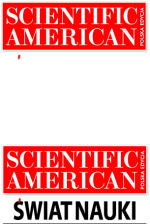 2006
2006
 2008
2008
 2010
2010
 2012
2012
 2014
2014



 |
Discreet charm of a compressor
‘Examination of the flow phenomena appearing within compressors and turbines’
Grzegorz Liśkiewicz – author of photographs, Blades of blower DP1.12 Pressure tube placed within an inlet channel of blower DP1.12 |

|
Description popularizing the research project
They are standing in the open space, sometimes picturesquely composed with the landscape. Their characteristic dynamic silhouettes catch attention. Majestic wings reach for the sky. Although unused, very few people can resist their charm. Smock mills, tower mills, post mills – old windmills. Wooden wings look as if shaped by wind itself, as if the wind itself moved them. Their magic swirling resembles the dance of falling maple seeds. Equally mesmerizing is the view of turning wheels of watermills. To move heavy millstones, blades of a waterwheel had to be perfectly tuned with the current of the river and yet oppose it. Observing the forces of nature, man learned to build machines using the powers of wind and water ideally.
Today watermills and windmills, although fully functional, are found mostly in folk museums. Yet still new machines, using the same laws of nature, are built. More and more rare windmills are replaced by wind farms. The shape of turbines topping the slender towers, like the shape of wings of their predecessors, was chosen to use fully the power of wind.
Without the rules that are set by the elements of water and air, and the rules that govern them, all the man-made propellers, fans, turbines and compressors would be useless, and probably would have never been built. The fact that they do originate from the nature itself makes them beautiful, turning them into decorative motifs. Maybe that is why the rotating turbines equal three most beautiful things: dancing women, galloping horses, and a ship with sails hoisted. They have quite a lot of in common with the latter.
Abstract
The author of the presented pictures is doing PhD at the Institute of Turbomachinery at the Lodz University of Technology. Besides the passion to the field of his research, he shares interest in photography together with his supervisor – Longin Horodko, DSc, PhD. That is where the idea of photographic documentation of the machines and the equipment used at the institute came from. These photos are intended to express how difficult designing turbines and compressors is, but also to show how beautiful is the stage of such a machine. It is obvious that the man is responsible for the construction of the turbo machine. However its shape comes from the nature. It is the air and its behaviour that forms the shape of the blades and the flow channels. The author of the presented pictures concentrates on examination of flow phenomena appearing within centrifugal compressors, mainly on the "surge phenomenon"
Patronat honorowy
Leszek Jodliński
Dyrektor Muzeum Śląskiego w Katowicach
Zygmunt Łukaszczyk
Wojewoda Śląski
Jan Malicki
Biblioteka Śląska
Piotr Uszok
Prezydent Katowic
Adam Matusiewicz
Marszałek Województwa Śląskiego















